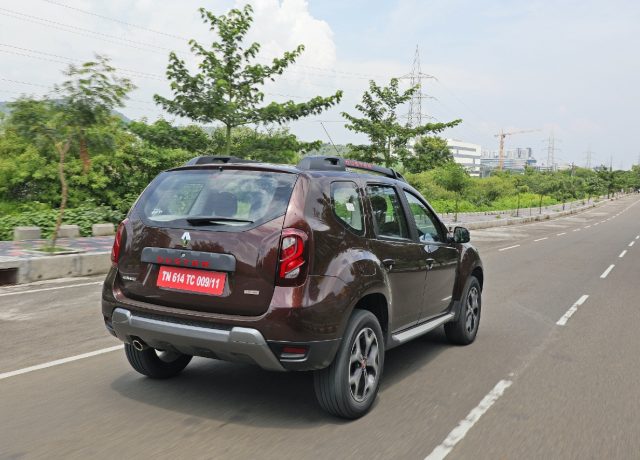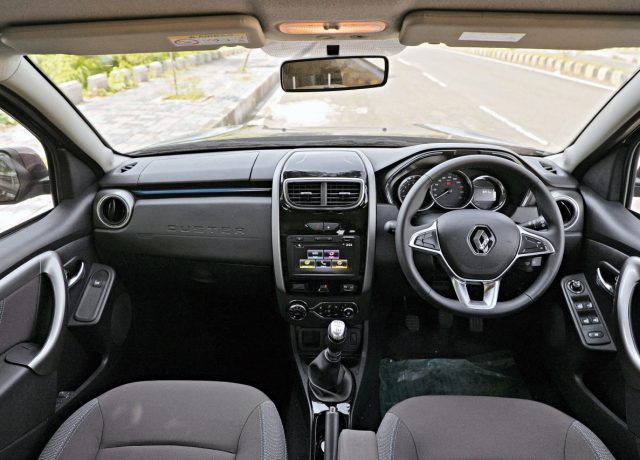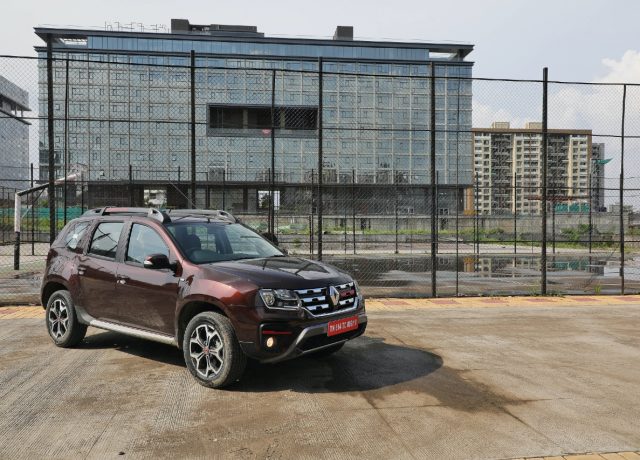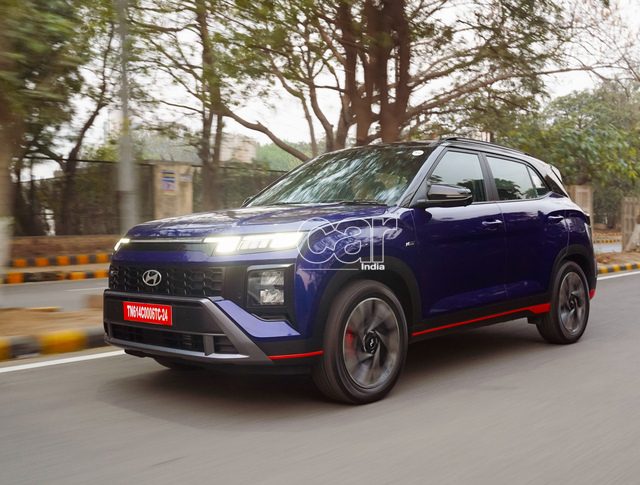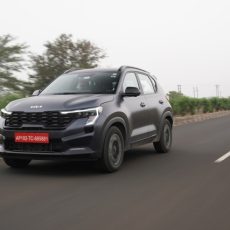For the last eight years, the Renault Duster has been one of the most loved mid-sized SUVs, especially if you love driving and doing mild off-roading. The question is, can the new Renault Duster 1.3 turbo-petrol keep up with the rapidly changing times?
Story: Sarmad Kadiri
Photography: Apurva Ambep
In the past eight years, the mid-sized SUV segment has rapidly evolved and the newer models with their fresh design and new-age features have managed to push the capable but eight year old Renault Duster to the sidelines. With BS6 norms kicking in, Renault’s trusted K9K diesel was put to rest and the 1.5-litre naturally aspirated petrol was left alone to hold the fort. Thankfully now, there a shot of excitement with the new Renault Duster 1.3 turbo-charged petrol. And yes, we got a go in it recently.
Design
The exterior design of the Duster 1.3 turbo-petrol, too, hasn’t been altered much and looks pretty much like the facelift version introduced last year. But there are a few elements to make the Duster Turbo stand apart from the other variant. Like the red highlights on the front grille and fog-lamp housing on the 17-inch alloy wheels. The roof-rails get sporty red “Duster” sticker and there’s a Turbo badge on the boot-lid. The overall design, as before, looks muscular and pleasing to the eye.
Cabin and Interior
Even the cabin of the Duster 1.3 turbo-petrol hasn’t been given any major updates either and looks rather functional compared to the modern offerings in the segment. It does get electric blue accents on the dashboard and similar blue stitching on the seat upholstery to conceal its age. And though some features have been included, their execution seems like an afterthought. For instance, the touchscreen is very basic and has been positioned too low, taking it away from the driver’s natural line of vision. Although you can connect your smartphone to the USB port, there isn’t a designated dock for it to securely rest on. The cabin, although spacious and well built, lacks the flair and oomph of modern cars. (Also read: Hyundai Creta 1.4 Petrol AT Review)
New Turbo-Petrol Engine
What makes the 1.3-litre unit special is that it has been co-developed with German major Daimler — that’s why several small Mercedes-Benz cars use this turbo-petrol engine too. And, need I say, it’s an absolute gem. Smooth, refined, and equipped with cutting-edge tech and, yes, turbocharged performance. Though the Renault Duster 1.3 turbo-petrol get an option of a CVT too, we got our hands on the six-speed manual ’box because that’s clearly a better combination if driving is your thing.
Performance
With the new engine, the Duster 1.3 turbo-petrol has become the most powerful SUV in the segment, a title it shares with its alliance cousin, Nissan Kicks, which also uses the spirited mill. Riding on 156 horses, this Renault doesn’t shy away from hitting the red-line if you give it the poke. But it feels best when kept under 5,000 rpm as it cruises ahead effortlessly. Performance isn’t really explosive, but the power delivery is smooth and linear. There’s a nice sporty hum from the turbo-petrol, but don’t expect the punch offered by the now phased-out K9K diesel. The turbo doesn’t spool up till about 1,800 rpm and from then on, there’s a hefty dose of propulsion.
And now there’s even an engine start-stop feature which tries to conserve some fuel. The best part is that the engine remains fairly relaxed in these speeds, giving the car a premium feel overall. Unlike the competition, the mechanicals need a little more input from the driver, a trait seen in several cost-effective European cars. The gear-lever needs some effort, which I’m ok with, but the shifts are not as clean and precise as I would have liked. Thankfully, the clutch isn’t heavy as in the old diesel version but a tad sticky to use.
You’ll have to give the accelerator a little extra pressure to make it go faster and it obliges without delay, hitting 90 km/h in second gear. Most of the strong 254 Nm comes in at lower revs, creating plenty of torque steer when you step on the gas. The traction control steps in to control matters, but outright acceleration does take a beating in the process.
Ride and Handling
The European genes of the Renault Duster 1.3 turbo-petrol provide good heft to the steering and most will appreciate the direct feel and feedback it dispenses. Going up winding roads or through a series of bends, it remains planted like a sedan without any trace of unnerving body-roll or pitching that most SUVs are infamous for. It’s so impressive in this section that it makes the Duster one of the most engaging cars to drive in its segment.
Parking the Duster 1.3 turbo-petrol in a tight spot or taking U-turns is another thing altogether. The extra effort it demands might seem a bit overwhelming for those with underworked biceps. And while negotiating fast corners, there’s evident kick-back which tries to force the steering to turn back to the centre position. This has been one of the nagging problems the Duster has since day one.
But both the driver and passengers will appreciate its top-class ride, which makes it not just comfortable but also boosts the driver’s confidence with its road manners. The Duster simply dismisses road undulations and potholes as if they just don’t exist, with practically none of the broken roads filtering into the cabin. The Renault simply waddles over broken roads without even wincing, which make it more superior when it comes to going off the beaten path.
Features
The features’ list doesn’t get any major additions in the Renault Duster 1.3 turbo-petrol and most of the equipment seen here was introduced on the 2019 model itself. This includes touchscreen infotainment with Android Auto and Apple CarPlay, reverse camera, cruise control, electric folding outer RVMs, and a cooled glovebox. It still misses out on a whole bunch of equipment that competition offers such as rear a-c vents, ventilated seats, and auto headlamps, to name a few. We’re not so used to seeing an old-fashioned key and twisting it to crank the engine. Buyers will desire keyless entry and push-button start because Renault’s more affordable models come equipped with that already.
Conclusion
The biggest strength of this Renault is the tremendous value for money it offers. The RxZ version we got to drive costs about Rs 2 lakh more than the top-end naturally aspirated 1.5 petrol, but with a price tag of Rs 12 lakh (ex-showroom), the Renault Duster 1.3 petrol-turbo falls in the price bracket of sub-four-metre SUVs which are much smaller in size. The Renault Duster 1.3 turbo-petrol still manages to win hearts for the sheer pleasure of driving it offers.
(Also Read: 2020 Tata Harrier First Drive Review)




